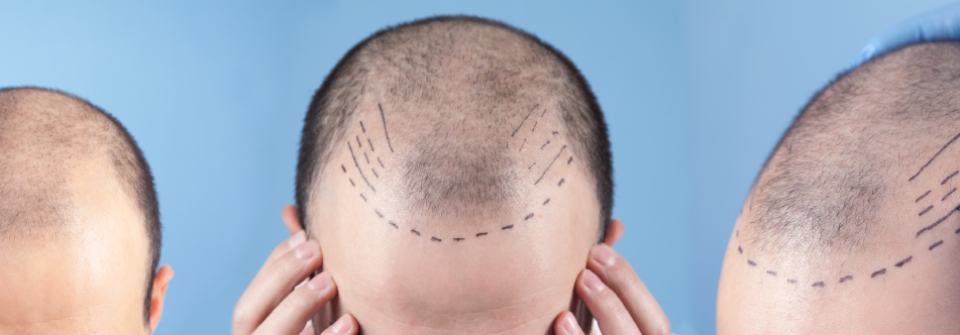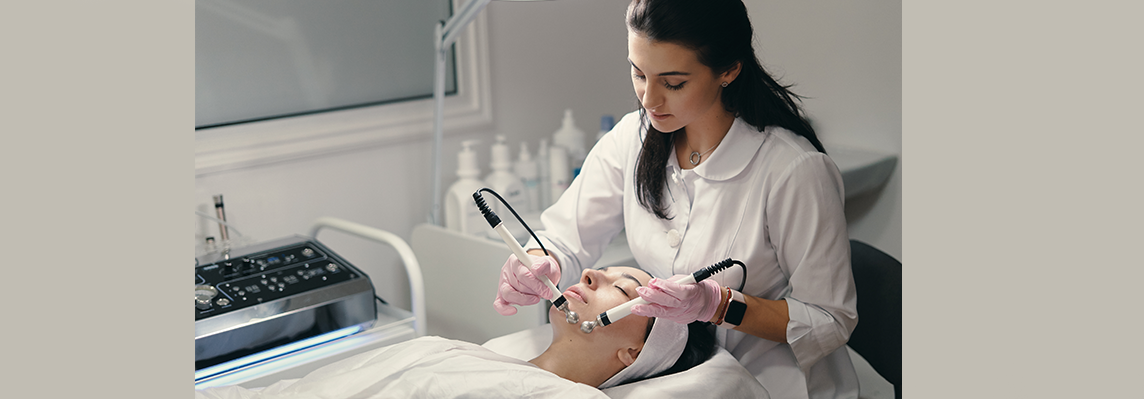
Abdominoplasty Journey: Tummy Tuck for a Toned Midsection
Abdominoplasty Surgery: A Comprehensive Introduction
Are you longing for a more sculpted and contoured midsection? Abdominoplasty, commonly known as a tummy tuck surgery, can be the transformative solution you've been seeking. This surgical procedure, also referred to as abdominoplasty surgery, addresses concerns such as excess abdominal skin, stubborn fat deposits, and weakened muscles. By undergoing abdominoplasty, you can achieve a flatter and more toned abdomen, enhancing your overall appearance and boosting your confidence.
In this comprehensive blog post, we will take you on a journey through the world of abdominoplasty surgery. We will shed light on its numerous benefits, explore different techniques utilized in the procedure, delve into the recovery process, and discuss potential risks and considerations. By providing valuable information and insights, we aim to help you make informed decisions about this life-changing procedure at Livglam aesthetic clinic. So, let's embark on this enlightening exploration of abdominoplasty and discover how it can help you attain your desired midsection transformation.
Understanding Abdominoplasty: Exploring Tummy Tuck Surgery
Abdominoplasty, commonly known as a tummy tuck, is a surgical procedure that aims to improve the appearance of the abdominal area and the part of this surgery is to remove stretch mark. It is typically sought after by individuals who have excess skin and weakened abdominal muscles due to factors such as pregnancy, significant weight loss, or natural aging.
One of the main reasons people opt for abdominoplasty is that excess abdominal skin and weakened muscles can be difficult to address through diet and exercise alone. In certain cases, even with dedicated efforts towards a healthy lifestyle, the abdominal region may not respond as desired. Abdominoplasty offers a comprehensive solution by addressing both the excess skin and the weakened muscles simultaneously.
During the procedure, an incision is made across the lower tummy, typically from hip to hip, just above the pubic area. The length and shape of the incision will be determined by the extent of
correction required. Through this incision, the surgeon can access the underlying tissues and muscles that need to be repaired.
The excess skin is carefully removed, and if necessary, the abdominal muscles are tightened through sutures. This process helps to create a flatter and firmer abdominal contour. The remaining skin is then repositioned, and the incision is closed with sutures.
Abdominoplasty can also be combined with liposuction surgery, which involves the removal of excess fat deposits in the abdominal area. This combination can further enhance the overall body contour and provide more satisfying results.
After the procedure, patients usually experience some temporary discomfort, swelling, and bruising. Pain medication and proper post-operative care instructions are provided to manage these symptoms. It is essential to follow the surgeon's instructions for a smooth recovery and optimal results.
Exploring Different Options in Abdominoplasty: Choosing the Right Technique:
Abdominoplasty utilizes various techniques to address specific patient needs. The primary abdominoplasty techniques include full abdominoplasty, mini abdominoplasty, extended abdominoplasty, and reverse abdominoplasty.
The full abdominoplasty technique:
This technique involves making a horizontal incision in the lower abdomen to remove excess skin and fat and tighten the abdominal muscles. It is suitable for individuals with significant concerns throughout the abdominal area.
Mini abdominoplasty technique:
On the other hand, it is ideal for patients with minor concerns limited to the area below the navel. This technique focuses on removing excess skin and fat from the lower abdomen, and it usually requires a shorter incision compared to a full abdominoplasty.
Extended abdominoplasty technique:
This technique targets excess skin and fat not only in the abdomen but also in the sides and lower back. It involves additional incisions to address a larger treatment area and provide more comprehensive results.
Reverse abdominoplasty technique:
Specifically addresses skin laxity in the upper abdomen. It involves making an incision in the breast crease or along the lower edge of the chest to remove excess skin and lift the upper abdominal area.
These different abdominoplasty techniques allow plastic surgeons to tailor the surgery to the specific needs and desired outcomes of each patient, providing customized solutions for a variety of concerns related to the abdomen.
The Abdominoplasty Procedure: A Step-by-Step Guide
Abdominoplasty, the tummy tuck surgery is a surgical procedure that aims to reshape and recontour the abdomen. Let's delve into the step-by-step process to understand what it entails:
Anesthesia:
Before the surgery begins, the patient is administered anesthesia to ensure their comfort and safety throughout the procedure. The type of anesthesia used may vary depending on the patient's specific needs and the surgeon's preferences.
Incision Placement
Once the anesthesia has taken effect, the surgeon starts by making an incision in a strategically chosen location. The incision is carefully planned to be discreetly hidden by clothing or swimwear, typically along the bikini line or in the natural folds of the abdomen.
Excess Skin Removal
After the incision is made, the surgeon proceeds to remove the excess skin from the abdominal area. This step is particularly beneficial for individuals who have experienced significant weight loss, pregnancy, or have loose skin due to other factors.
Muscle Repair
In some cases, the underlying abdominal muscles may be weakened or separated, leading to a protruding abdomen. During abdominoplasty, the surgeon addresses this issue by repairing and tightening the abdominal muscles. This step helps create a firmer and more toned appearance.
Skin Repositioning
Once the excess skin is removed and the abdominal muscles are repaired, the remaining skin is repositioned to create a smoother, flatter, and more contoured abdominal profile. The surgeon carefully drapes and sutures the skin in a way that enhances the overall aesthetic appearance.
Throughout the procedure, the surgeon takes utmost care to ensure optimal results while minimizing scarring. After the surgery, the patient will be provided with post-operative instructions and may require a recovery period to heal properly. Abdominoplasty can offer transformative results, helping individuals achieve a more proportionate and confident body shape.
Combining Abdominoplasty with Other Procedures:
For individuals seeking comprehensive body contouring, combining abdominoplasty with other procedures can be an option. Liposuction, breast augmentation, breast lift, or buttock lift surgeries can be performed concurrently to achieve more balanced and harmonious results. Discussing your aesthetic goals with a qualified plastic surgeon can help determine the most suitable combination of procedures for your unique needs.
Recovery and Post-Operative Care from Abdominoplasty
Recovery plays a crucial role in achieving optimal results from abdominoplasty. Following your surgeon's post-operative instructions is essential for a smooth recovery process. Expect some initial discomfort, swelling, and bruising, which will gradually subside. Wearing compression garments, avoiding strenuous activities, and attending follow-up appointments will aid in the healing process and ensure the best possible outcome.
Risks and Complications of abdominoplasty surgery
While abdominoplasty is generally safe, it's important to be aware of potential risks and complications associated with any surgical procedure. Infection, bleeding, scarring, and poor wound healing can occur, but these risks can be minimized by choosing a skilled and experienced plastic surgeon. Thoroughly discussing the procedure, its benefits, and potential risks with your surgeon will help you make an informed decision.
Realistic Expectations and Patient Satisfaction for Abdominoplasty Results
Setting realistic expectations is vital for a satisfying outcome. Abdominoplasty can yield significant improvements, but it's important to understand that final results may take time to fully manifest. Scarring is an inherent part of the surgery, but a skilled surgeon will make every effort to ensure scars are well-placed and discreet. Reading patient testimonials and success stories can provide insight into the transformative potential of abdominoplasty.
Psychological and Emotional Benefits of Abdominoplasty
Beyond the physical changes, abdominoplasty can have a profound impact on your psychological and emotional well-being. Feeling more confident, comfortable, and satisfied with your appearance can positively influence your self-esteem and overall quality of life. Throughout the entire journey, your plastic surgeon and their team will provide support, guidance, and reassurance, ensuring you have a positive experience.
Conclusion:
Abdominoplasty offers individuals the opportunity to achieve a toned and contoured midsection, enhancing their body confidence and overall well-being. By understanding the different techniques, the recovery process, potential risks, and managing expectations, you can embark on this transformative journey with confidence. Consult with a qualified plastic surgeon to explore whether abdominoplasty is the right option for you, and take the first step toward achieving the abdomen of your dreams.



















